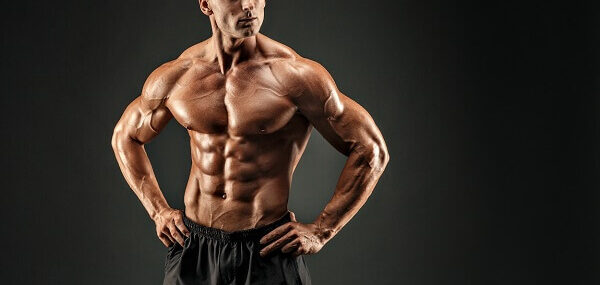The Rise of Fitness Models: Inspiring Health and Wellness:
Introduction Fitness Models
Fitness Models have undergone tremendous change over the last few years, Fitness Models particularly because of fitness models. These are individuals with a fit body but have come to symbolize a style of life that encourages well-being, health, and self-control. Social networking has increased their influence more than ever, making these figures central to the cultural aspect of fitness. This article explains how are created, their impact on society, the diversity of this niche, and what problems it faces.
The Evolution of Fitness Models:
A “fitness model” was something one could use to describe the classic bodybuilding idols from times past, while now, it encompasses all athletes, influencers, and ordinary people driven by the pursuit of health and fitness. The majority of the prominent magazines related to fitness in the 1980s and 1990s had as a cover boy a muscular bodybuilder that typified the aesthetically pleasing physiques from the gold standard of fitness. The definition of the fitness model has expanded enormously in this age of internet and social media.
Nowadays, one easily comes across various body types of fitness models that may pop up either doing yoga, CrossFit, bodybuilding, or even dancing. This seems to be a reflection of the general realization of the fact that, after all, there is no such thing as a fitness model, just like that one-size-fits-all idea. Everyone now loves to acknowledge the existence of functional strength and flexibility besides mere aesthetics.
Effects of Social Media:
Fitness Models:
Social media has indeed changed the game for fitness models. Models can post their journey, workouts, nutrition, and personal stories directly to their followers on Instagram, TikTok, or YouTube. This brings the aspect of fitness more to reality, demystifying it as well for a wider population.
Like any model, fitness models often create communities that foster support and motivation. Direct interaction with their followers through live workouts, Q&A, and motivational posts previously kept these fitness professionals separated from the general public. Such an interaction demystifies fitness while giving a sense of belonging to those on a similar health journey.
Variety in Fitness Modeling:
Fitness Models:
The most positive trend in the fitness modeling industry is diversity in representatives. Now, the fitness models represent all sorts of ethnicities, body types, and age groups. The idea of fitness becomes ever more inclusive.
Body Positivity
The redefinition of fitness modeling by the body positivity movement is very profound. It says that all bodies are respectable and fit can be attained at any size. Most of these models advocate for self-love and acceptance, which encourages them to be concerned with their journeys instead of others’.
Age Diversity:
Fitness Models:
The fraternity of fitness modeling is also being acknowledged for age diversity. Age does not break any stereotype and people’s abilities, even in old age. Such a thing that a human being can be fit and active even at the most mature age of life has encouraged more individuals of all ages to lead an active lifestyle as long as they can in order to maintain health.
Cultural Representation:
Fitness Models:
It is a very important cultural representation as well sincecome from diversified backgrounds and represent different ways of exercise and wellness that are rooted in their culture. Hence, the appeal of being fit is more diverse in itself and opens communities up to various perspectives and ways of techniques.
The Fitness Model Lifestyle:
Being a fitness model is much more than being beautiful; it’s taking the person into a healthy lifestyle. Most of the fitness models exercise very vigorously, eat perfectly according to their nutrition plans, and even care for mental wellness. The important parts of their lives are as follows:

Training Regimens:
They have their scheduled plan and schedule as a workout program on the kind of fitness they desire to gain. Such include strength training weightlifting, cardio, yoga, HIIT, and many others. Most people post about the workout on social media as an inspiration or guidance for betterment.
Nutrition:
An integral part of the lifestyle of a fitness model is nutrition. Most would speak out about the diversity of food, on whole foods that include fruits and vegetables, lean proteins, and healthy fats. Most fitness models also give tips and recipes on how to prep meals or cook, thus making good food options more accessible to their fans.
Mental health is the part of the general fitness. Fitness models always call for mindfulness practices such as meditation and self-care. They say that one can never differentiate between physical and mental well-being. That holistic approach strikes a chord with the followers and reminds them to give priority to both aspects of health.
Challenges Faced by Fitness Models:
Despite all this success and influence, many issues face the fitness models. The pressure to be under that particular image can even lead to mental problems such as anxiety and body dysmorphic disorder. The competitiveness in the line of work also causes an ecosystem where one might feel an obligation to beat themselves constantly and others at the same time.
Pressure from Social Media:
Social media tends to curate the presentation of a person, which makes the expectations of life unrealistic. Many of the fitness models feel pressures to showcase perfection and very often have to Photoshop pictures or portray a lifestyle not true to life.
Burnout:
Demands of being a fitness model can also lead to burnout. It can get really overwhelming keeping track of workouts, content creations, brand collaborations, and all else in your personal life. Most of these fitness models need self-care, even setting up boundaries for mental safety.
